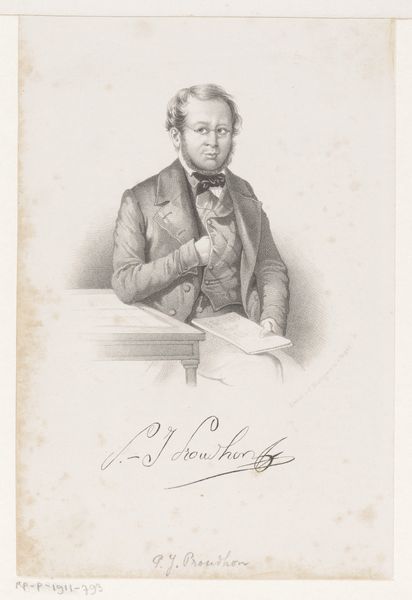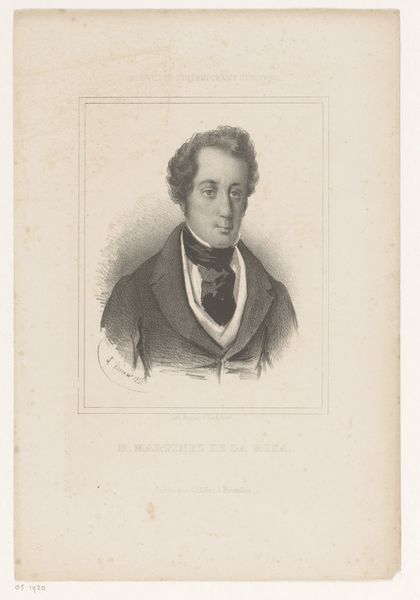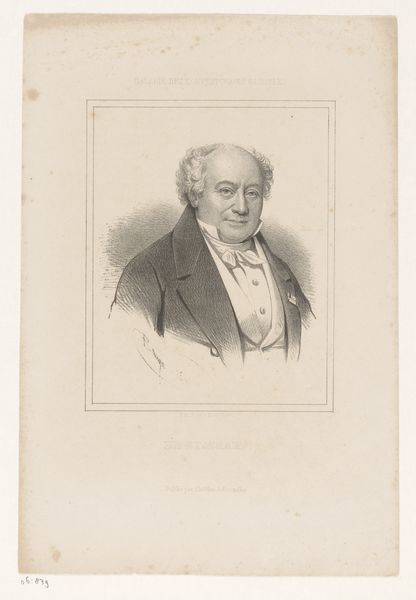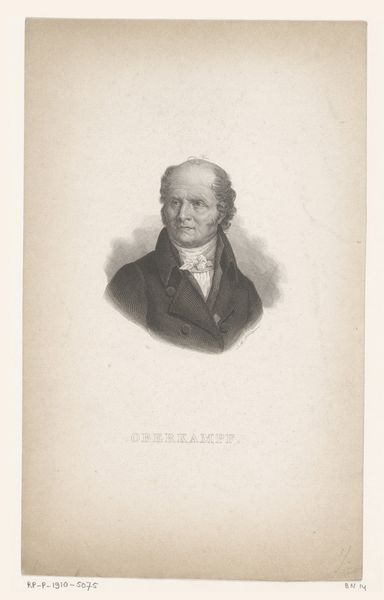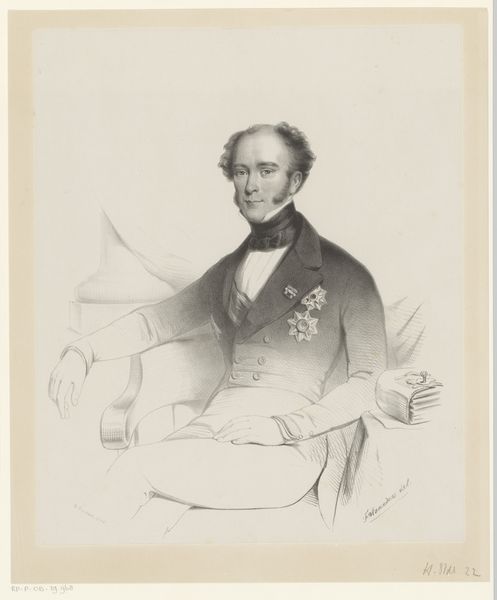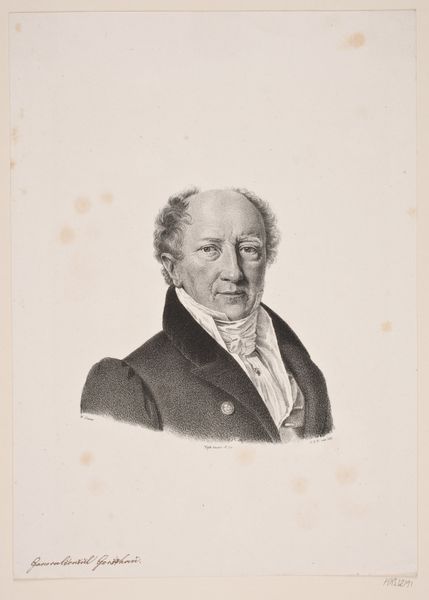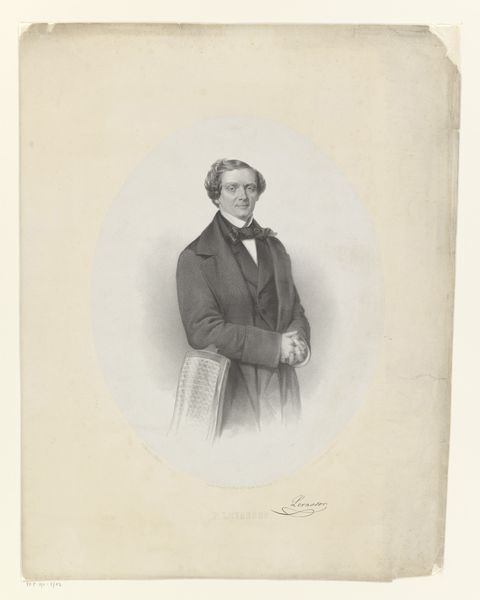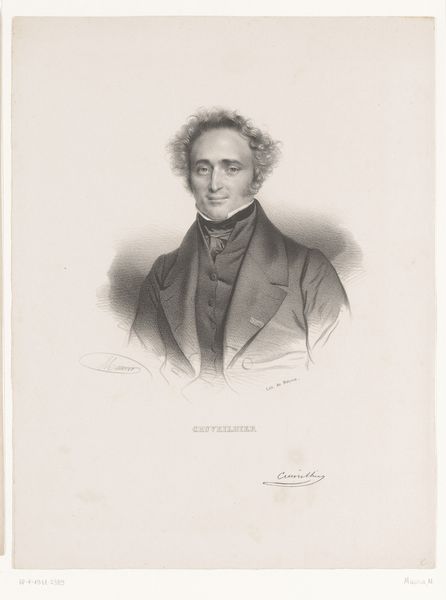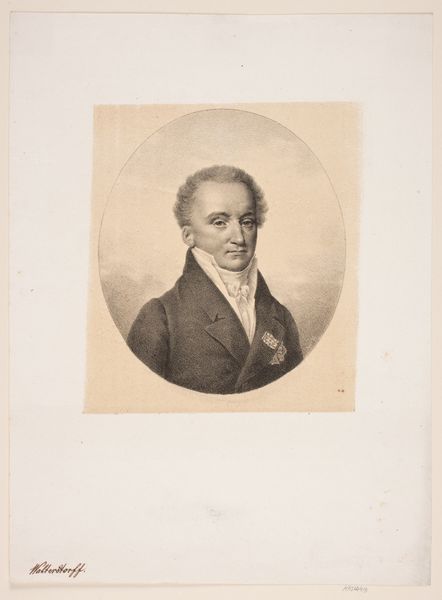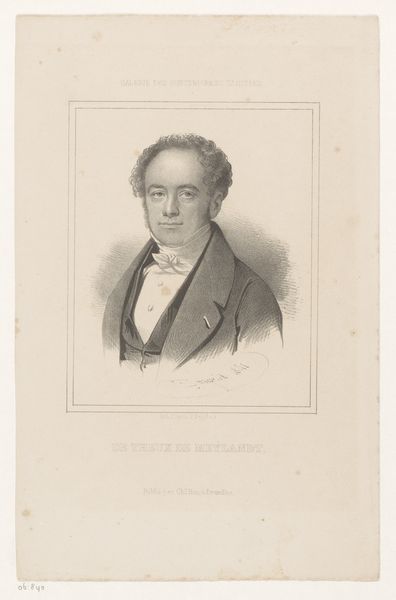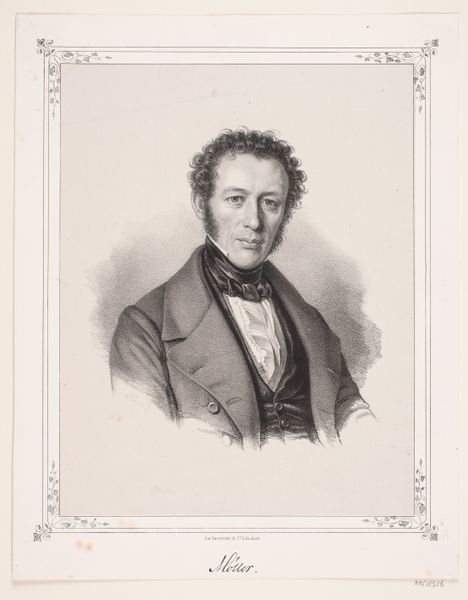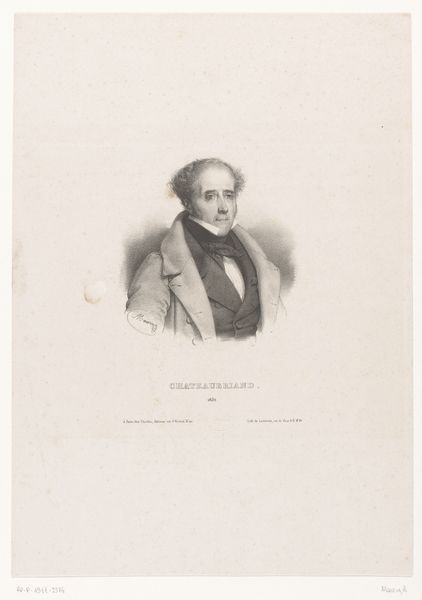
drawing, pencil
#
portrait
#
drawing
#
caricature
#
pencil drawing
#
pencil
#
portrait drawing
#
history-painting
#
academic-art
#
realism
Dimensions: height 260 mm, width 175 mm
Copyright: Rijks Museum: Open Domain
Curator: Today, we’re observing a drawing titled “Portret van Jan Frans Willems,” created sometime between 1841 and 1847, employing pencil as its primary medium. Editor: It immediately strikes me as an exercise in subdued power. The light catches the subject's face, but there's a hint of melancholic pensiveness etched around his eyes. Curator: Indeed. The artist's technique, particularly in the delicate rendering of the sitter’s hair and the precise detailing of the jacket, contributes to an overall impression of controlled realism. Note how the pencil strokes vary in density to create form and shadow. Editor: I find it particularly intriguing to consider who Jan Frans Willems was during the years this portrait was made. As a writer and leading figure in the Flemish movement, he would have been engaged in a moment of linguistic and cultural assertion, battling against the dominance of French. The gravity in his expression might well reflect the weight of those struggles. Curator: Certainly, the work aligns with the academic art of its time, favoring a representational style. I'm most captivated by the implied textures - the smoothness of the glass in his spectacles against the slightly rougher fabric of his coat. The artist manages a wonderful tonal range using just pencil. Editor: Considering the context of 19th-century nationalism and cultural identity, portraits such as this become incredibly important as tools of representation and affirmation for communities seeking recognition and respect. In a way, it's a declaration of belonging and importance. Curator: You make an excellent point about belonging. Formally, the composition is balanced and dignified. The play of light and shadow guides the viewer's eye, reinforcing the portrait’s inherent stillness. The composition draws one's eye toward the interior life suggested within the subject’s steady gaze. Editor: I agree; the gaze itself speaks volumes about intellectual engagement and purpose. We must ask ourselves, who are the subjects missing from such formal representations? This portrait might implicitly underscore a canon that favors certain societal segments while overlooking others. Curator: Indeed. It allows for consideration of perspective and societal narrative. Editor: It is fascinating how the visual language here prompts deeper contemplation.
Comments
No comments
Be the first to comment and join the conversation on the ultimate creative platform.
